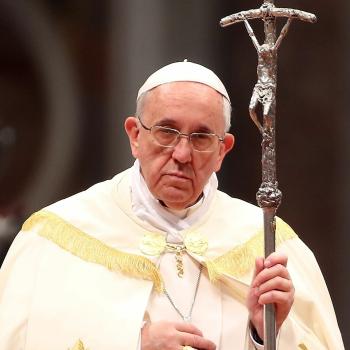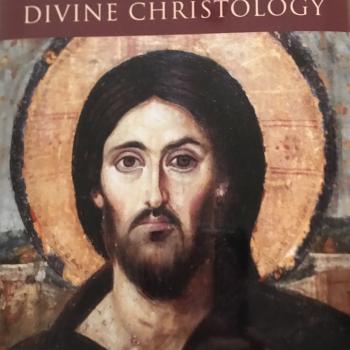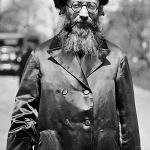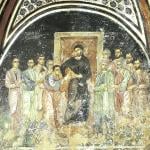The first time I went to a Catholic church I felt pretty confused. People were standing, bowing, genuflecting, crossing themselves, dipping their fingers in holy water, lighting candles, raising their hands up, Standing and kneeling and standing and kneeling and standing and kneeling. There were prayers in English, Latin, Greek, and Hebrew. I was amazed that everyone seemed to know what they were doing… “Wow!” I thought, Catholic Worship is COMPLICATED!
I didn’t even know the half of it!
Now that many years have gone by and I have gone to mass a few hundred times it all makes sense to me… well at least it does if I go to a Latin Catholic Church practicing the Roman rite using the Ordinary form with a edition based on the Third edition of the missal without any major inculturative modifications.
You heard me correctly.
The mass most Catholics in the United States are used to is far from the only way people worship in the Catholic church. There are TWENTY THREE Catholic churches (all in 100% union with one another and in union with the Pope). Any Catholic could choose to go to ANY of these churches on any given Sunday and participate in the liturgy and receive communion. Some of them used the same liturgy as the Eastern Orthodox Christians (Byzantine Catholics, those in the purple in the chart) others follow the liturgical traditions of the Coptic Church, the Ethiopian Orthodox, and the Great Church of the East. Some have their very own ancient liturgical traditions that are used only in their Church.
If you haven’t visited these Churches I encourage you to stop by one. Most mid-large sized cities in the United States have at least one Eastern Catholic community…
Even if you don’t choose to leave the comfort of the “Latin Catholic Church” there is still a great deal of diversity to be found. There are four ancient liturgical traditions in the Latin Church.
- Most people are familiar with the Roman, but there is also
- the Ambrosian Rite that developed in Milan with it’s own distinctive elements (often influenced by Eastern Christian practices)
- and there is Mozerabic Rite which developed in Spain (this has been impacted by Celtic, Gallican, and Muslim worship).
- The Dominicans retain their own rite, and don’t hesitate to use it from time to time
Even if you don’t choose to leave the comfort of the “Roman Rite” of the “Latin Catholic Church”there are three forms of the rite which are in use today.
- The Ordinary form (this is the mass that has been used most places since 1970, which is now in it’s third edition) mostly done in the Vernacular. It was developed around the reforms of Vatican II
- The Extraordinary form (this is the form that follows the mass guidelines of 1962, before the Second Vatican Council). If follows the reforms of the Council of Trent, and the subsequent changes between 1570 and 1962. There are even a few ways to do it.
- Solemn Mass (where prayers are chanted, incense is used, and a deacon and subdeacon are present),
- Sung Mass (basically pretending to do Solemn Mass, only you don’t have priests to act as deacon and subdeacon),
- Low Mass. “High Mass” usually refers to the Sung, but can refer to the Solemn
- The Anglican Usage (this is the form used by those in the Personal Ordinariates, which are like “dioceses” made up of the Churches in the Anglican communion that have come into union with Rome in a particular area.) This form is founded on the pre-trent Stowe Missal liturgy of England and the subsequent revisions made as part of the Protestant Reformation.
Even if you don’t choose to leave the comfort of the “Ordinary Form” of the “Roman Rite” of the “Latin Catholic Church”there are modified missals. That have been created to suit the cultural context of particular Catholic communities that sometimes vary a great deal from what one might expect in a traditional western mass. One example of this is the The Roman Missal for the Dioceses of Zaire. If you went to a mass that uses this missal you would see a lot of changes
- The Priest is dressed in the robes that would be used by a tribal priest
- The servers (all male) carry spears
- There is a new role introduced, that of the announcer (as one finds in African public functions)
- The celebrants and servers dance around the altar as a means of veneration
- There is an included invocation of the saints and ancestors
- The penitential rite is moved to after the Creed
- There is a sprinkling of Holy Water after the kiss of peace
- Pots of incense are used, and left burning during the general intercessions
- There is a dance accompanying a bringing of gifts for those in need
- There are some new prayers added that highlight key elements of the African cultural worldview (communal, non-dualistic, solidarity oriented)
- The lifting of hands accompanies prayers and responses to prayers
- People sit at the reading of the Gospel
- Places for the people to respond in the eucharistic prayer have been added
FINALLY Even if you don’t choose to leave the comfort of the “Ordinary Form” of the “Roman Rite” of the “Latin Catholic Church” and are using a fairly typical Missal. People still disagree. Some folks hold hands during the “Our Father” others don’t. Some people Receive communion on the Tongue others revive in their hands. Some churches kneel during the whole Canon others only kneel during the consecration. Some priest raise the host high and others simply show it to the people. Some churches use drums and guitars others use an Organ or just a Choir. I could go on and on and on…
So yeah. Catholic Worship is Complicated!
Keep this in mind if you ever start to feel your way is BEST.
Jesus doesn’t seem to mind a little (or a lot) of diversity when people pray!

















